Kaap 309: Muscular System III (Contraction, Advanced Terminology, Reflexes)
1/18
There's no tags or description
Looks like no tags are added yet.
Name | Mastery | Learn | Test | Matching | Spaced |
|---|
No study sessions yet.
19 Terms
Muscle Twitch
response of a muscle to a single stimulation
Three periods:
Latent: Delay → stimulus happens, but no contraction yet.
Contraction: Muscle fibers shorten and tension rises
Relaxation: Muscle relaxes, Ca²⁺ goes back to SR.
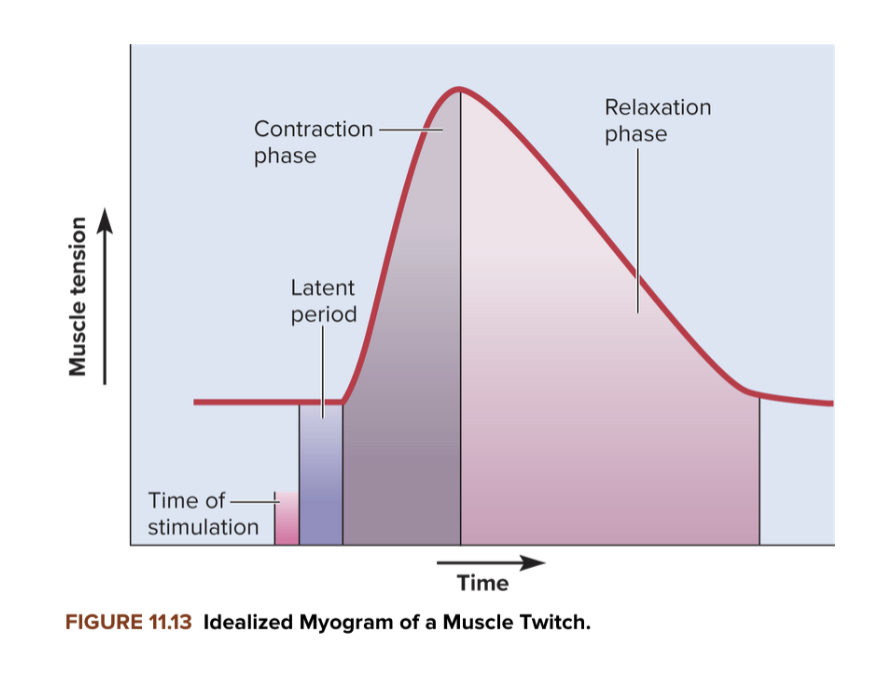
Muscle Fatigue
Decreased ability of a muscle to contract despite stimulation (Definition: Muscle cannot contract fully even with stimulation.)
High-Intensity Exercise Causes
K⁺ accumulation in T-tubules
ADP and Pi buildup → interferes with cross-bridge cycling
Low-Intensity (Long-Duration) Causes
Fuel depletion (low glycogen/glucose)
Electrolyte loss
Central fatigue (reduced neural drive)
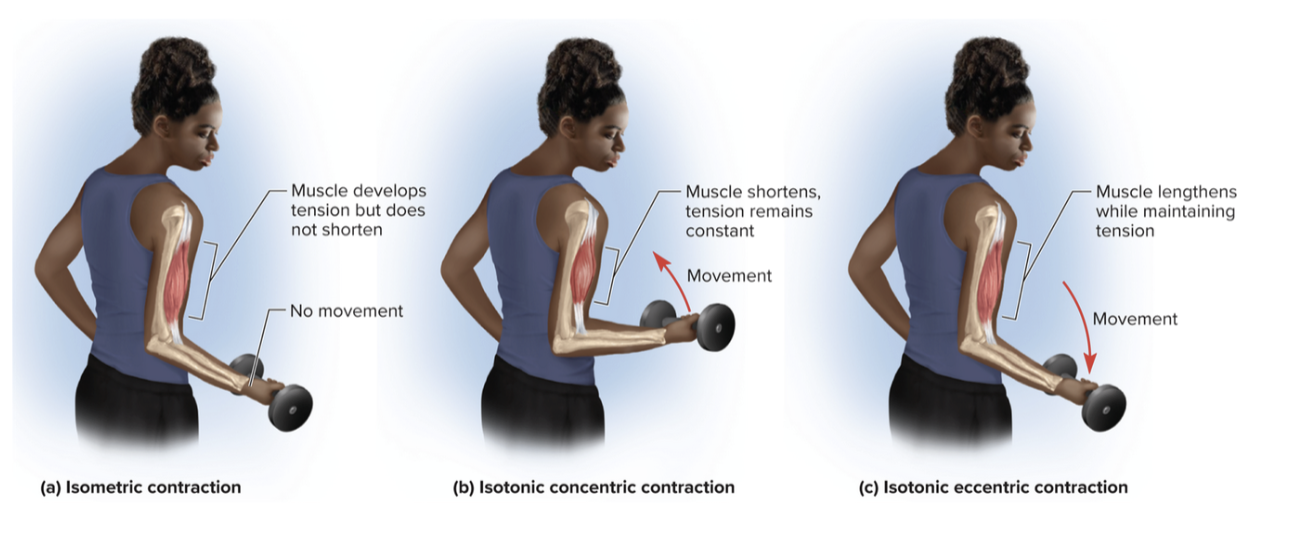
Types of contractions
Isometric:
Muscle tenses but does not change length (no movement).
Example: Holding a plank.
Isotonic:
Muscle changes length while tension remains constant.
Concentric: Muscle shortens (lifting a weight).
Eccentric: Muscle lengthens (lowering a weight)
Type | Description | Example |
|---|---|---|
Isotonic (concentric) | Muscle shortens while generating force | Lifting a weight |
Isotonic (eccentric) | Muscle lengthens while resisting | Lowering a weight slowly |
Isometric | Muscle contracts but doesn’t shorten | Holding a plank or wall sit |
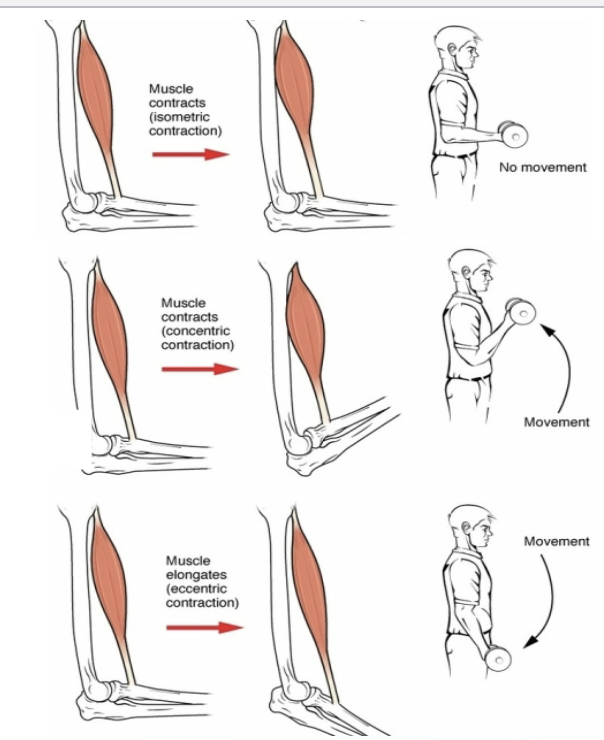
Fascicle arrangement
Parallel
Fibers run parallel to the long axis of the muscle.
Can shorten a lot → good range of motion.
Example: Sartorius
Fusiform
Spindle-shaped parallel fibers with a bulge in the middle.
Moderate force, good for speed.
Example: Biceps brachii
Circular
Fibers arranged in a circle → control openings.
Example: Orbicularis oris (around the mouth)
Pennate (feather-like)
Fibers attach to tendon at an angle → generate more force, less range.
Unipennate: fibers on one side of tendon → Example: Extensor digitorum
Bipennate: fibers on both sides → Example: Rectus femoris
Multipennate: tendon branches within muscle → Example: Deltoid
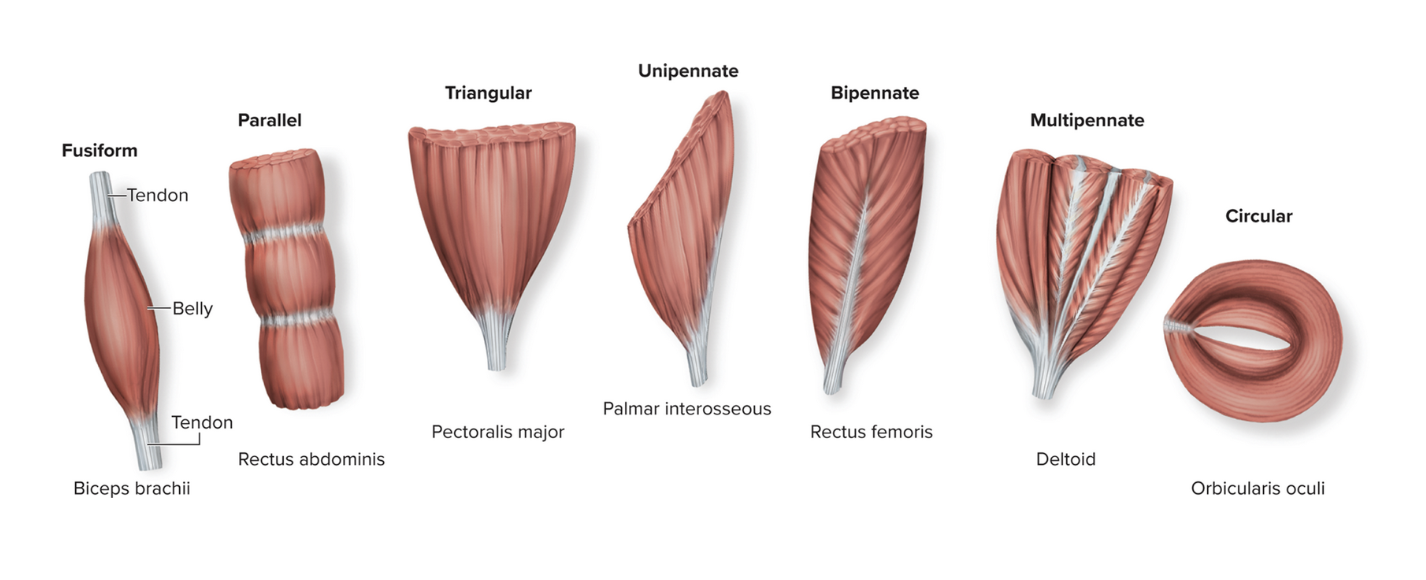
Attachments: origin and insertion
• Origin (red):
– “stable” segment of a muscle
– Typically proximal
• Insertion (blue):
– “moveable” segment of a muscle
– Typically distal
Tip: “Origin = Anchor, Insertion = Moves”
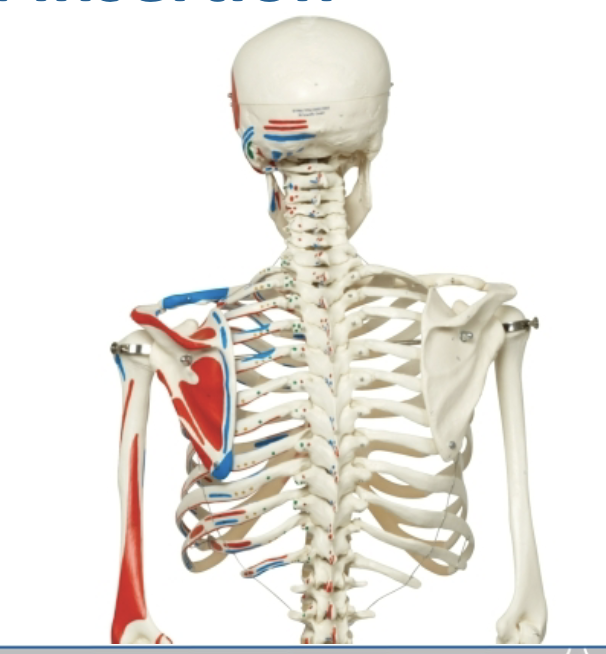
Agonist and Antagonist
• Agonist
– Prime mover of a joint during contraction
• Antagonist
– Opposes the prime mover
Agonist (Prime Mover):
The muscle that does the main work to produce a movement.Example: When you bend your elbow, the biceps is the agonist because it contracts to lift the forearm.
Antagonist:
The muscle that opposes the movement of the agonist.Example: When bending your elbow, the triceps is the antagonist because it stretches and resists the movement.
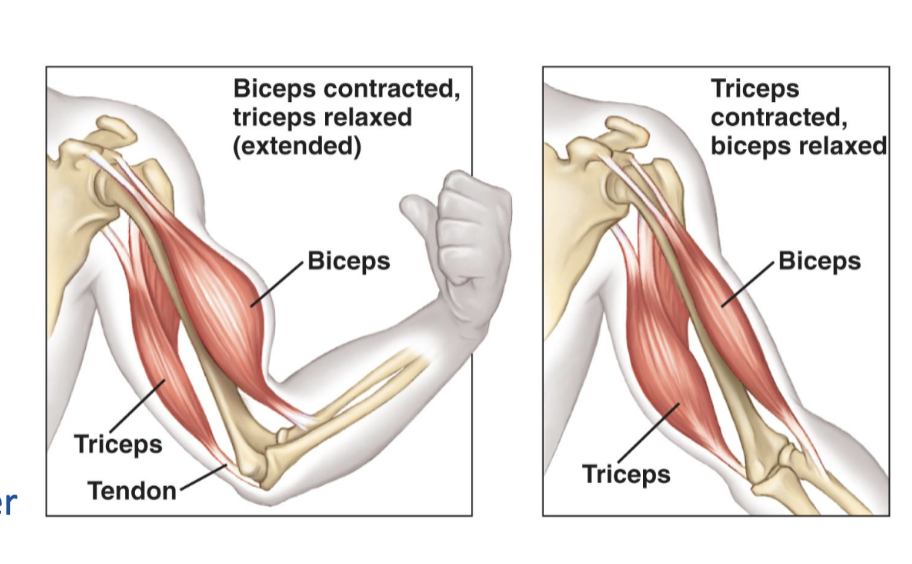
Synergists & Fixator
• Synergist
– Assists the prime mover
• Fixator
– Prevents movement, "fixates" a bone, holds bone steady
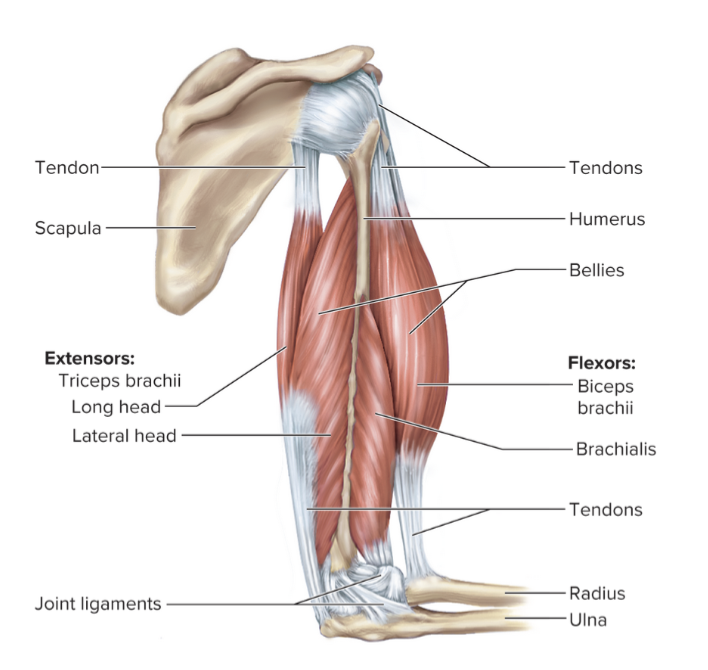
Lever Systems
Class | Arrangement (F = Fulcrum, E = Effort, L = Load) | Example | Notes |
|---|
1st | F between E & L | Neck (nodding) | Mechanical advantage or disadvantage |
2nd | L between F & E | Standing on tiptoes | Always mechanical advantage |
3rd | E between F & L | Biceps flexion | Most common in body |
1st class: Fulcrum in middle → neck nodding
2nd class: Load in middle → tiptoe → always mechanical advantage
3rd class: Effort in middle → biceps → most common
First class levers
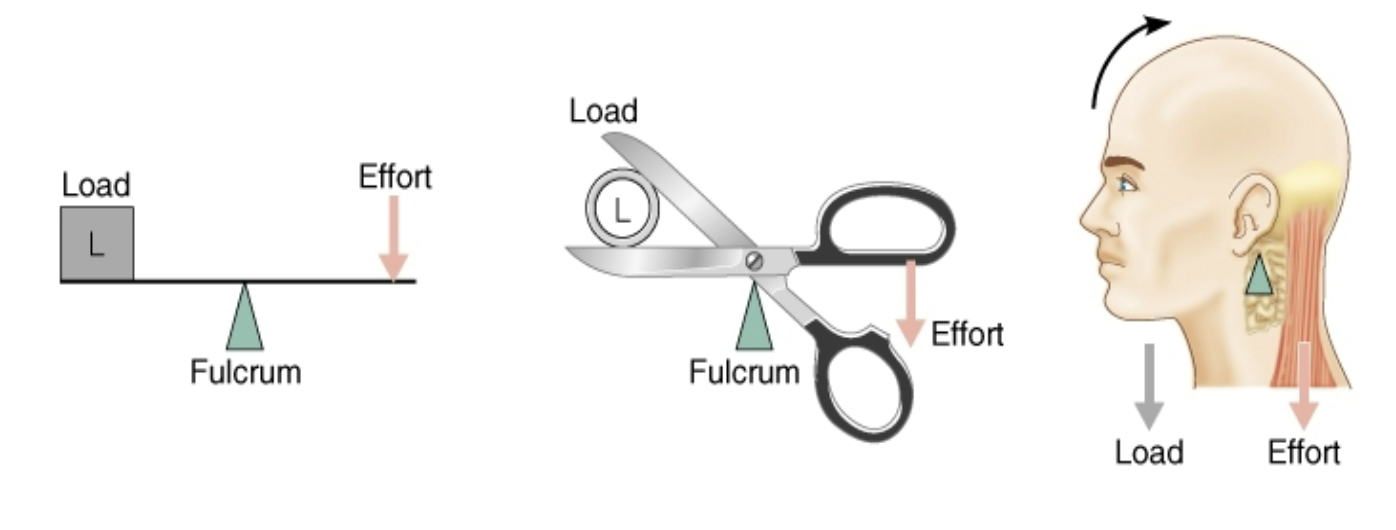
Second class levers

Third class levers
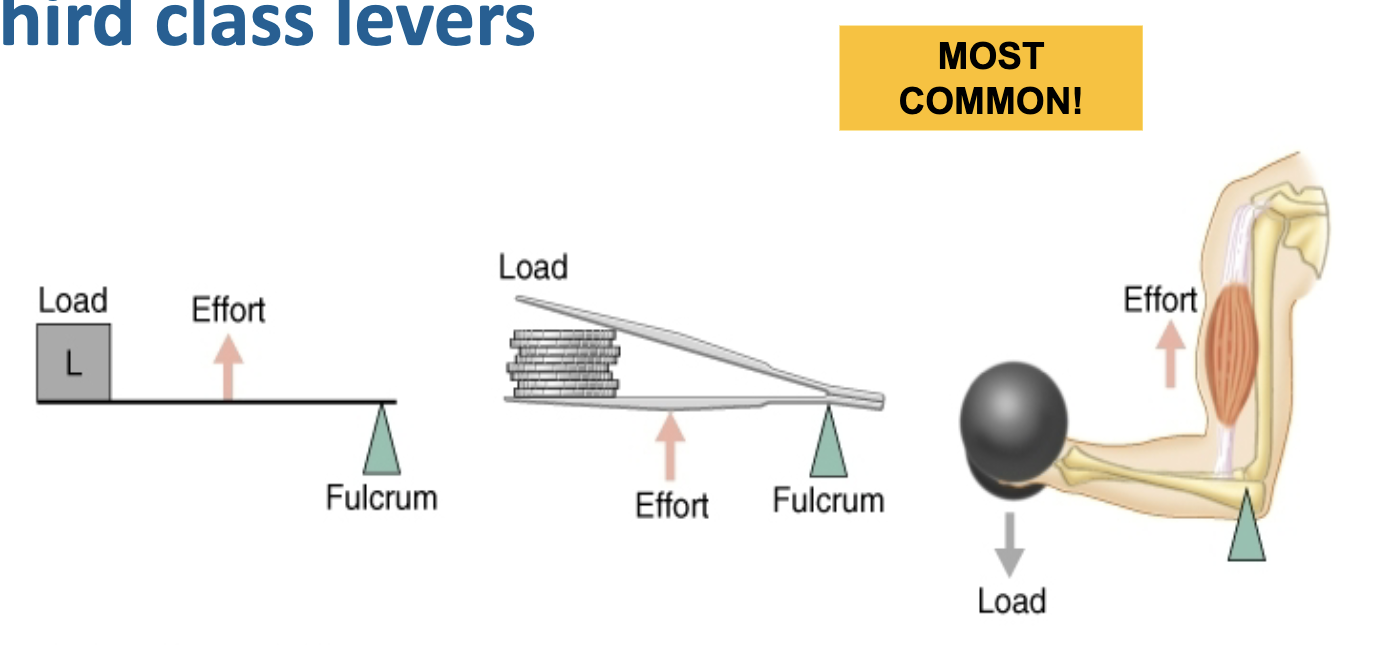
Reflex Arcs
Types:
Inborn (intrinsic): Unlearned, involuntary (knee-jerk)
Learned (acquired): Practice → automatic (riding bike)
Properties: Quick, involuntary, stereotyped, requires stimulation

Reflex Properties
Requires stimulation → happens because something triggers it.
Quick → happens fast, before you can think.
Involuntary → you don’t choose to do it.
Stereotyped → same response every time.
Mnemonic: QISS → Quick, Involuntary, Stereotyped, Stimulated
Muscle Spindles
modified muscle fibers with the primary function of detecting and signaling muscle length (body movement)
Typically found near the musculotendinous junction
Proprioceptors
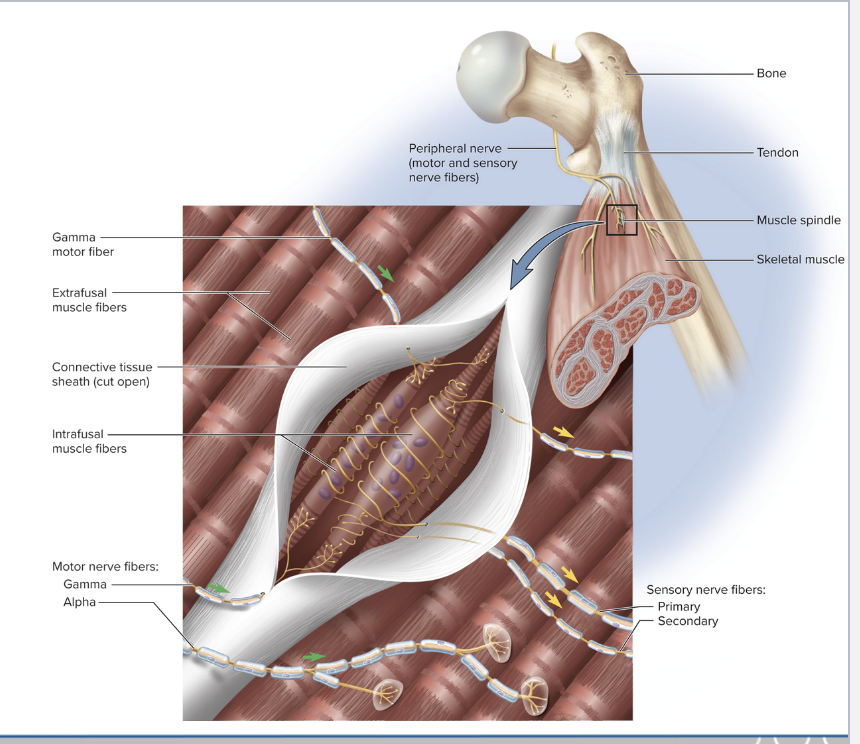
Intrafusal and Extrafusal
• Intrafusal fibers
– Within (inside) the muscle spindle
– Gamma motor neurons
– Sensory (afferent) fibers
Primary & Secondary
• Extrafusal fibers
– "regular" muscle fibers
– Alpha motor neurons
Intra = inside spindle → senses stretch
Extra = outside spindle → does the work (contracts the muscle)
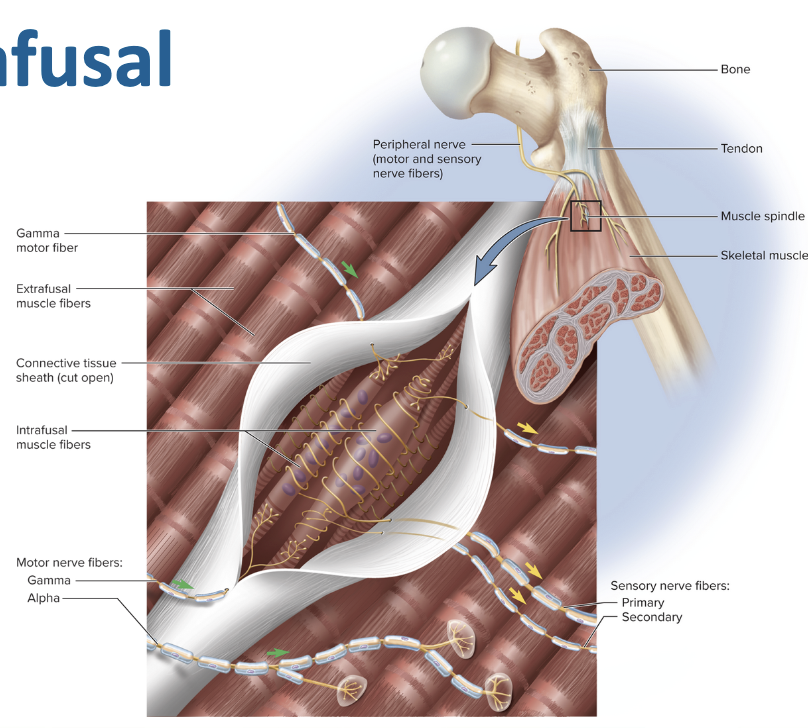
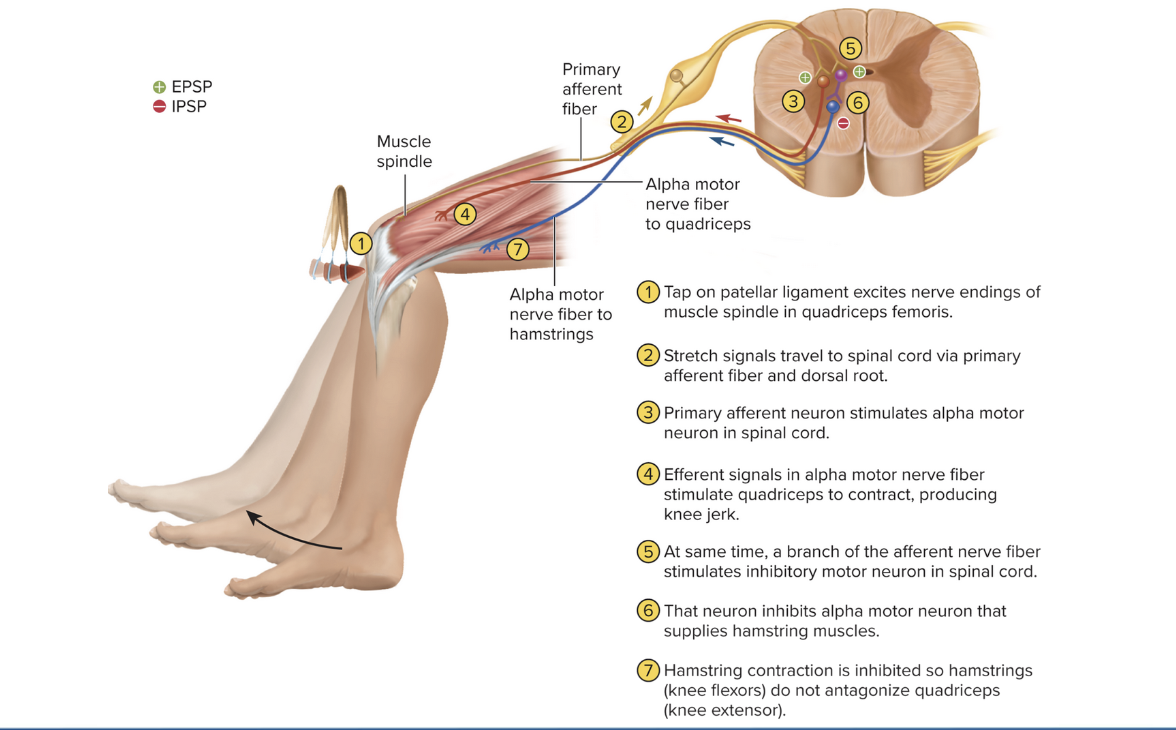
Stretch Reflex
help the nerves system smoothly coordinate skeletal mm.
What do we need to know?
– Length of the muscle (muscle spindles)
How much (degree)
How fast (rate)
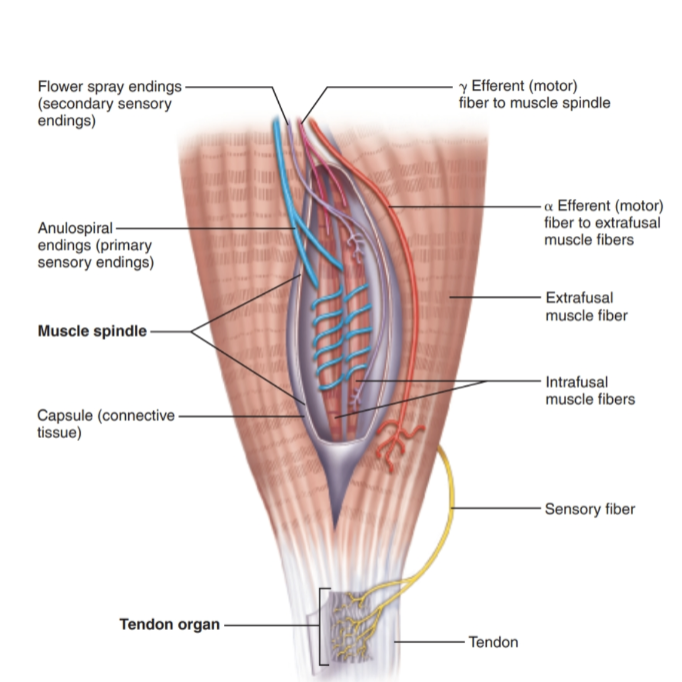
[Golgi] Tendon Organs
small, loose collagen fibers innervated by 1+ nerve fibers and detect tension
Located in the tendons (near the musculotendinous junction)
Proprioceptors
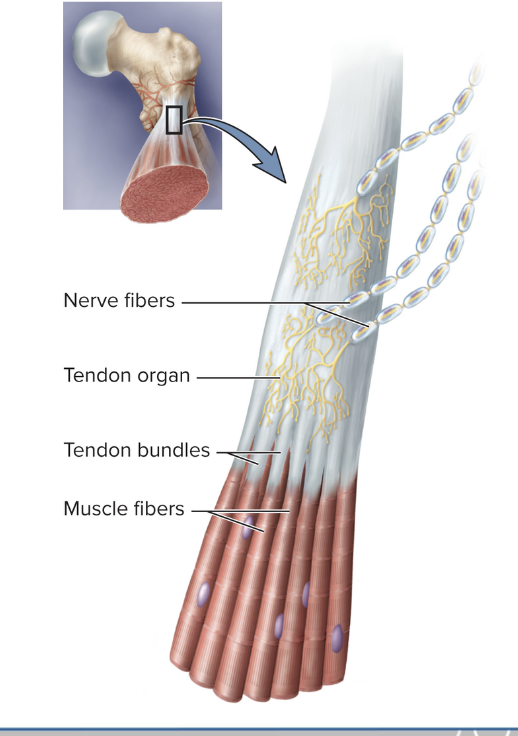

Tendon Reflex
help to prevent muscles and tendons from tearing during stretching force
What does it need to know?
Tension of the muscle (tendon organs)
Polysynaptic reflex (results in muscle relaxation)
Afferent impulse to the cerebellum
Contracting muscle is inhibited and antagonist muscle is activated

Take Home Points
There are three classes of levers found in the human body
All reflex arcs must contain 5 essential components and 4 properties
Stretch and tendon reflexes are the most common somatic reflexes
Stretch Reflex: Protects muscle length → monosynaptic
Tendon Reflex: Protects tendons → polysynaptic, relaxes contracting muscle
Tip: Stretch = “length check”, Tendon = “tension check”